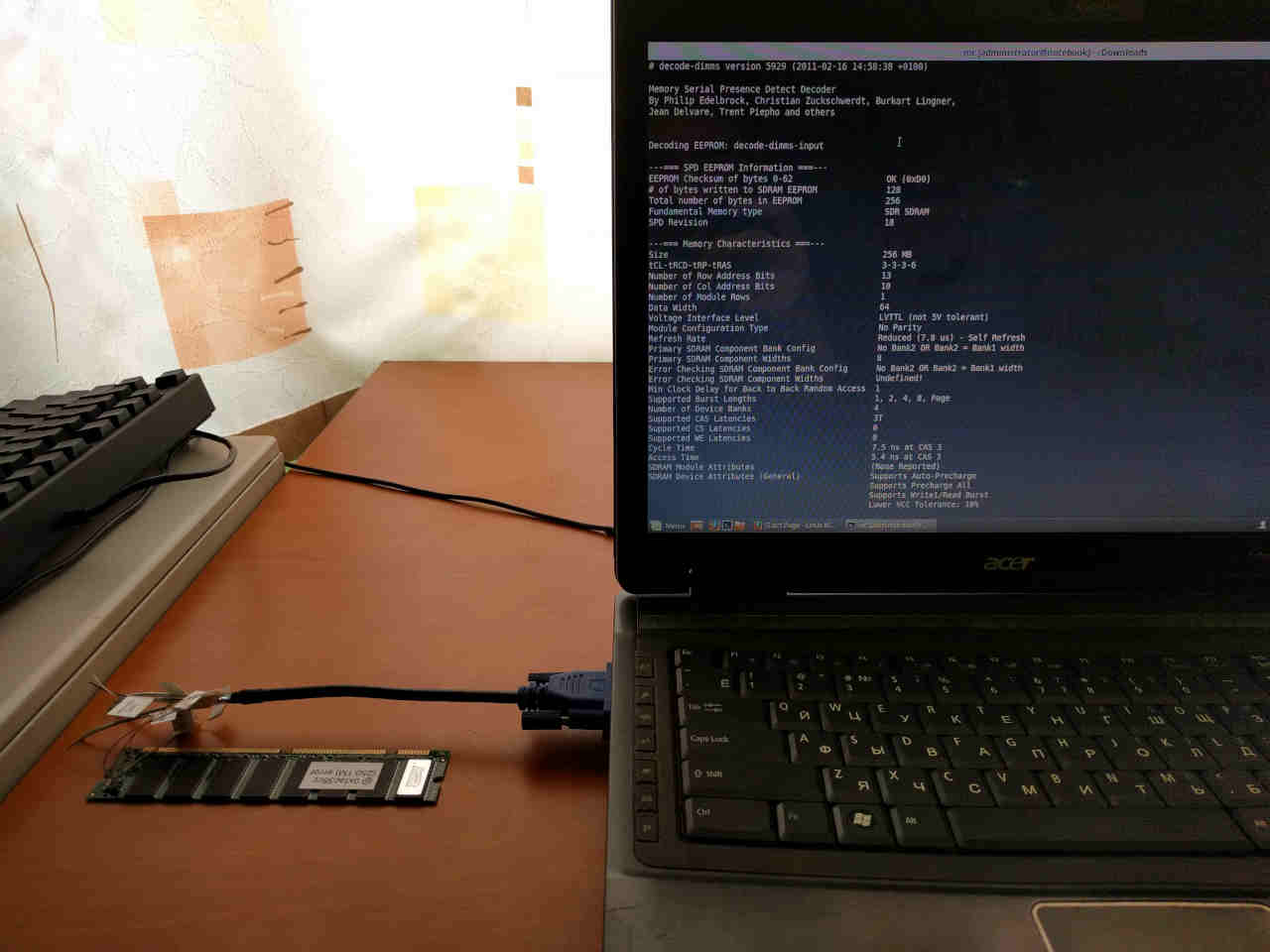
Reprogramming
To reprogram the SPD I used a spare VGA cable and an old laptop, making use of the I2C interface used to read out display information: Cut the cable near the connector, split the subcables and label them with help of a multimeter and pinout information. Then solder +5V, GND, SCL and SDA directly to the SPD chip according to the pinout in its datasheet (search by part number). Connect address pins to ground so that the chip is at the address of 0x50 (incidentally the same as the EDID chip of a monitor). If you can’t find a datasheet, follow traces to the respective nearby DIMM pins. The EEPROM should be 5V-tolerant, or another means is required.
I ran modprobe i2c-dev to make the I2C interface show up as /dev/i2c-$number,
connected a monitor and used my DDC/CI tool to figure out which device number
it would succeed with.
Then I plugged in the modified VGA cable and used i2c-tools to read out and
modify SPD contents. xxd is a useful tool for making an input file for
decode-dimms, although the output requires some touch-ups.

DVI, HDMI and DisplayPort can also be used for easy access to an I2C bus, there’s just more wires to worry about.
Comments
Use e-mail, webchat, or the form below. I'll also pick up on new HN, Lobsters, and Reddit posts.